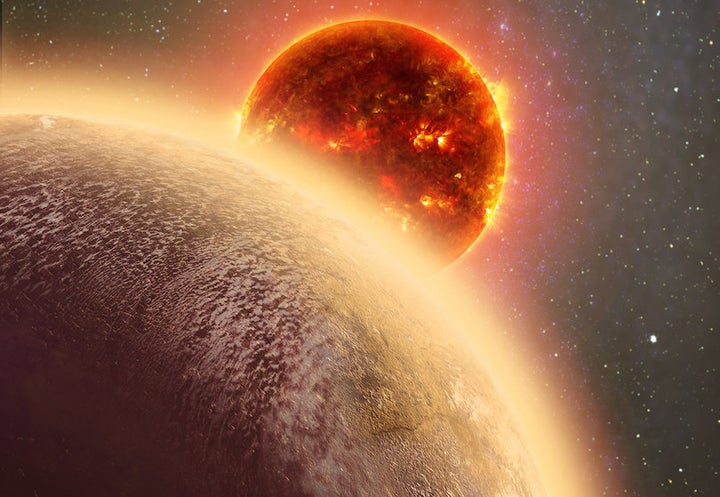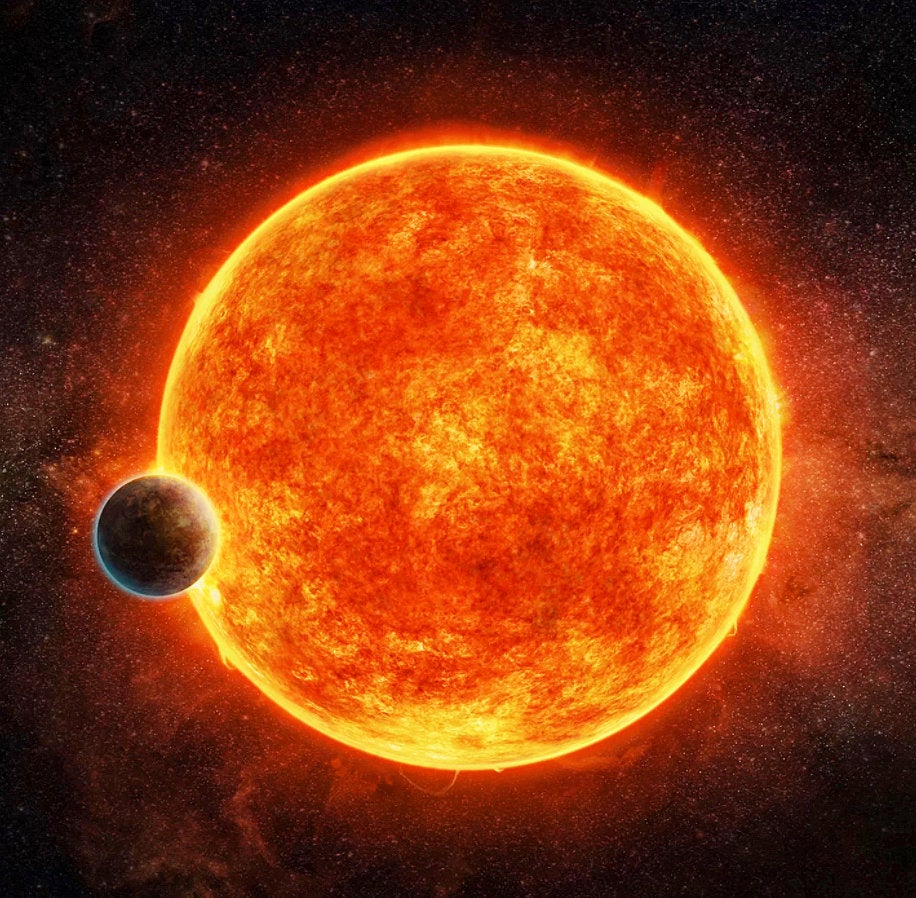
A Venus-like alien world may hold clues to how rocky planets with atmospheres like our own have evolved in the universe. Named GJ 1132b, it is only 39 light-years away -- close enough for astronomers to easily conduct further observations.
In May, the MEarth-South telescope array at the Cerro Tololo Inter-American Observatory in Chile discovered the exoplanet -- a planet that orbits a star other than the sun. Now, scientists have determined that the alien world is likely to have an atmosphere, said Dr. David Charbonneau, astronomer at the Harvard-Smithsonian Center for Astrophysics in Cambridge, Massachusetts, who co-wrote a paper describing the planet.
"This is the first terrestrial exoplanet -- meaning a rocky, Earth-sized planet, such as Venus, Mars, Earth -- that is very close and orbits a small star and hence allows us to study its atmosphere," Charbonneau told The Huffington Post.
The researchers used an apparatus called a spectrograph to measure how much the planet and the star that it orbits, a red dwarf, pull on each other through gravity. This allowed the scientists to determine the mass of GJ 1132b, which is about 60 percent greater than Earth's.
They found that the planet is about 16 percent larger than Earth, with a diameter of about 9,200 miles, and that it has an Earth-like gravity. So a person standing on the surface of GJ 1132b would weigh only 20 percent more than they do on our own planet.
GJ 1132b orbits its star at a distance of 1.4 million miles, which is pretty close. In our own solar system, Mercury, the planet closest to the sun, orbits at a distance of 36 million miles.
Because it's so close to its star, GJ 1132b has an estimated surface temperature of around 450 degrees Fahrenheit. That may seem warm, but it's not so hot that the atmosphere would evaporate or escape into space, Charbonneau said.
"However, it is hotter than the Earth, so we think it would have lost its water to space," he said. "This would leave behind an atmosphere of nitrogen and carbon dioxide."
So far, scientists have only studied exoplanet atmospheres that are mostly composed of hydrogen, similar to Jupiter and Saturn, Charbonneau said.
The researchers hope to conduct follow-up observations of GJ 1132b using the Hubble and Spitzer Space Telescopes.
The nearby world may soon be frequently studied by scientists since it's so close, noted Dr. Zachory Berta-Thompson, an observational astronomer at the Massachusetts Institute of Technology and lead author of the research.
"This planet is going to be a favorite target of astronomers for years to come," he said in a statement.
The paper describing the planet appeared in the journal Nature on Wednesday.
Also on HuffPost:

